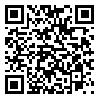Volume 9, Issue 4 (12-2019)
J Health Saf Work 2019, 9(4): 363-380 |
Back to browse issues page
Download citation:
BibTeX | RIS | EndNote | Medlars | ProCite | Reference Manager | RefWorks
Send citation to:



BibTeX | RIS | EndNote | Medlars | ProCite | Reference Manager | RefWorks
Send citation to:
Azarnia Ghavam M, Mazloumi A, Hosseini M R. Identification and evaluation of human error in operation of electrical installations of Tehran Province Electricity Distribution Company using SHERPA technique. J Health Saf Work 2019; 9 (4) :363-380
URL: http://jhsw.tums.ac.ir/article-1-6222-en.html
URL: http://jhsw.tums.ac.ir/article-1-6222-en.html
1- Occupational Health Engineering, School of Public Health, Tehran University of Medical Sciences, Tehran, Iran
2- Department of Occupational Health Engineering, School of Public Health, Tehran University of Medical Sciences, Tehran, Iran ,amazlomi@tums.ac.ir
3- Electrical Power Engineering, Head of HSE Office, Strategic Staff of Tehran Province Electricity Distribution Company, Tehran, Iran
2- Department of Occupational Health Engineering, School of Public Health, Tehran University of Medical Sciences, Tehran, Iran ,
3- Electrical Power Engineering, Head of HSE Office, Strategic Staff of Tehran Province Electricity Distribution Company, Tehran, Iran
Abstract: (4077 Views)
Background: Industrial incidents are one of the major problems of today's societies. Studies in this field show that the main and most important cause of error occurrence is human factor. Therefore, the aim of this study was to identify and evaluate the risk of human error in the activities related to the operation of electrical installations of the Tehran Province Electricity Distribution Company.
Methods: This study is a qualitative and cross-sectional research was conducted by direct observation of the activities and documents, interview. Tasks and subtasks were selected and analyzed using Hierarchical task Analysis, (HTA).The results were presented in the form of HTA. Finally, according to the instructions of SHERPA, the relevant worksheet was completed.
Results: The analysis of SHERPA worksheets showed that a total of 3399 errors were detected for 759 tasks as 39.57% of them were action errors, 32.4% review type, 7.32% recovery type, 19.64% communication type and 1.80% were selective errors. According to the results of risk assessment, 12.47% of the errors were unacceptable risks level, 59.57% were undesirable, and 20.2% were acceptable risks but need to be revised and the rest, 7.33% acceptable with no need for revision or safe ones.
Conclusion: According to the results, the most common type of error was action errors and in order to reduce this type of errors, using necessary corrective measures such as proper selection of people for occupations, training, monitoring, using smart machines, using tag out systems and checking at the suitable time and updating the instructions would be useful and effective countermeasures.
Methods: This study is a qualitative and cross-sectional research was conducted by direct observation of the activities and documents, interview. Tasks and subtasks were selected and analyzed using Hierarchical task Analysis, (HTA).The results were presented in the form of HTA. Finally, according to the instructions of SHERPA, the relevant worksheet was completed.
Results: The analysis of SHERPA worksheets showed that a total of 3399 errors were detected for 759 tasks as 39.57% of them were action errors, 32.4% review type, 7.32% recovery type, 19.64% communication type and 1.80% were selective errors. According to the results of risk assessment, 12.47% of the errors were unacceptable risks level, 59.57% were undesirable, and 20.2% were acceptable risks but need to be revised and the rest, 7.33% acceptable with no need for revision or safe ones.
Conclusion: According to the results, the most common type of error was action errors and in order to reduce this type of errors, using necessary corrective measures such as proper selection of people for occupations, training, monitoring, using smart machines, using tag out systems and checking at the suitable time and updating the instructions would be useful and effective countermeasures.
Type of Study: Research |
Received: 2019/12/28 | Accepted: 2019/12/28 | Published: 2019/12/28
Received: 2019/12/28 | Accepted: 2019/12/28 | Published: 2019/12/28
Send email to the article author
| Rights and permissions | |
 |
This work is licensed under a Creative Commons Attribution-NonCommercial 4.0 International License. |






